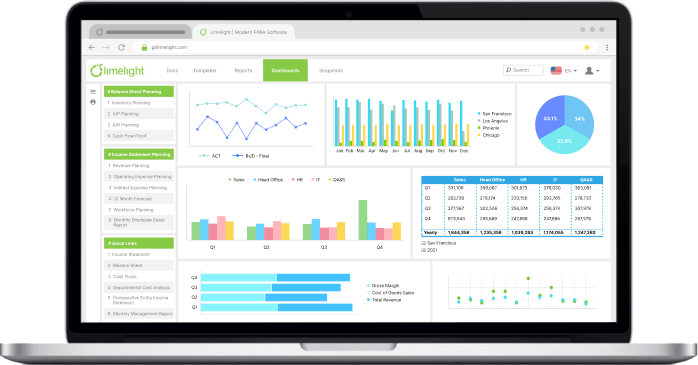CPM
3 Benefits Financial Services Firms can get from Modern FP&A Software
By Madonna Dennis |
Published: October 06, 2020
By Madonna Dennis |
Published: October 06, 2020
.webp?width=450&name=Madonna%20Dennis_Author%20Bio%20and%20Pic%20-%20Big%20(1).webp)
Finance and accounting professionals are facing more demands due to a rapidly-changing industry. The volume of data is growing, meaning decision-makers need faster planning and reporting cycles, and better insights into their business. Often, businesses would turn to spreadsheets for their financial analysis, but now they are looking for advanced tools that can do more for them.
According to a Pew Research study, 46% of workers saw an increase in their productivity with the growing use of digital technology. For financial services companies, Financial Planning & Analysis (FP&A) software offers several advantages over traditional spreadsheets.
Modern FP&A software monitors all business processes, with the goal of improving said processes. These applications can help track your progress by measuring key performance indicators in your business.
This software automates the financial close process, allowing more time for analysis. With FP&A software, financial services can maximize revenue opportunities, give decision-makers the insights they need, and prepare for future outcomes.
Here are 3 ways FP&A software can help financial service companies improve their overall processes.
The financial services sector has become overburdened by managing multiple systems, an abundance of data, and increased regulations. On top of this, managing the business’s key financials in spreadsheets is time-consuming and error-prone. This leaves almost no time for analysis which can be a key strategic advantage to this sector.
Modern FP&A software can help finance teams automate complex calculations, to free up their time to discover more opportunities. For example, comparing the sales forecast of two different products, or comparing a product’s expenses for the past 12 months versus two years prior. Performing calculations such as allocations and currency conversion are automated in FP&A software.
Financial and operational data can also be combined to inform management on all aspects of the business, including customer relationships. Accurate reports can be linked to revenue drivers, allowing managers to spot any hindrances and maximize their success.
Historically, planning and reporting involved finance and relatively few other departments. Today, budgeting, forecasting, and reporting are more collaborative, involving employees from all parts of the company.
Financial Services firms relying on manual processes are stuck with inflexible and slow reporting cycles. By the time the report is created, the data is already outdated as more continues to flow in. Thus, financial services firms such as banks, credit unions, investment companies, and REITs cannot effectively leverage their data and provide decision-makers with the most accurate and current information.
Modern FP&A software can give businesses access to on-demand data, by way of integrating with their ERP and other source systems. For example, banks can connect to customer information and gain a clearer understanding of outstanding payments. This allows banks to stay in close touch with customers to ensure timely collections within negotiated terms. Information can flow directly from the ERP into budgets and reports, giving all managers and decision-makers the most up-to-date view.
Dashboards showcase metrics and drivers that are relevant to each decision-maker. The ability to see changes occur in real-time on the dashboard offers enormous value to the organization.
Another significant advantage of modern FP&A software is in building What-if scenarios. Managers can create models that show best and worst-case scenarios, then make decisions based on each.
Before, planning and modeling these scenarios would have taken the time that banks do not typically have, but FP&A software allows models to be created instantly. Scenario planning is especially helpful when decision-makers want to see the potential impact of certain drivers. FP&A software can automatically load the data based on any context you wish to see without the time-consuming task of gathering data.
With automated consolidations, teams can even implement rolling forecasts for continuous and accurate planning. As actuals flow into the dataset, the forecast can be updated based on the newest numbers.
Running multiple simulations can also highlight risks if the worst-case scenario occurs.
Modern FP&A software provides banks with the agility to quickly implement cost structure changes as needed.
Using FP&A software has quantifiable results in financial services. Banks and firms alike will typically report that their budgeting process is shortened from months to weeks after implementing this technology. Even copy and pasting, formatting and distributing, collecting, and consolidating spreadsheets in Excel are cut down significantly.
Instead of struggling with spreadsheets, financial service businesses can spend more time analyzing and understanding their numbers. Finance can now do more than report historical data. With the help of modern FP&A software, banks can effectively forecast, model multiple scenarios, and spot more trends over time. These actionable insights will give banks the data they need, when they need it, and help move the business forward.
To evaluate FP&A applications, use our ready-to-go checklist that lists all the key requirements to modernize your processes.
Subscribe to our newsletter


